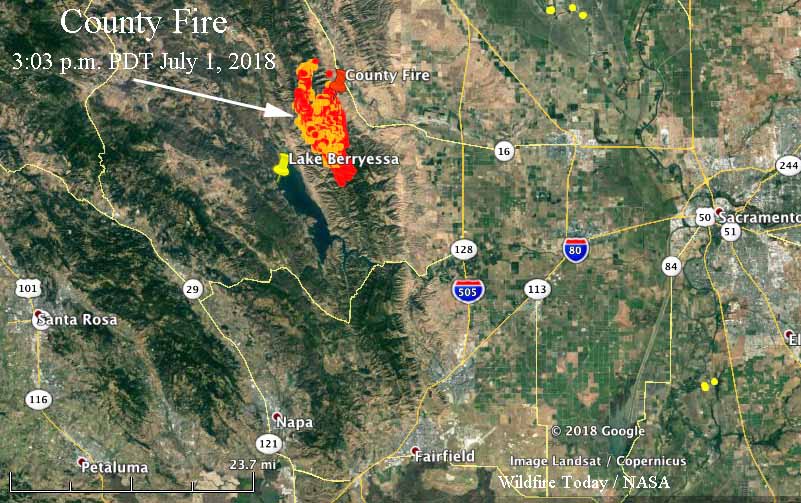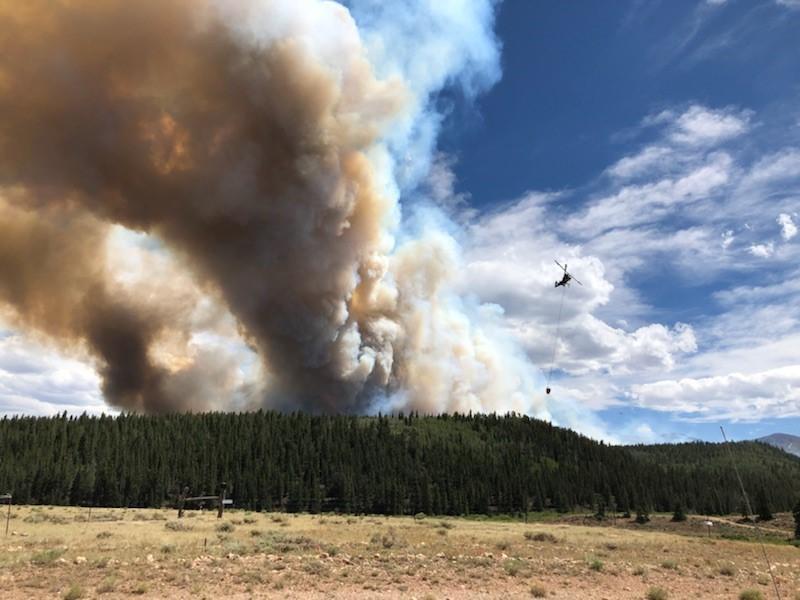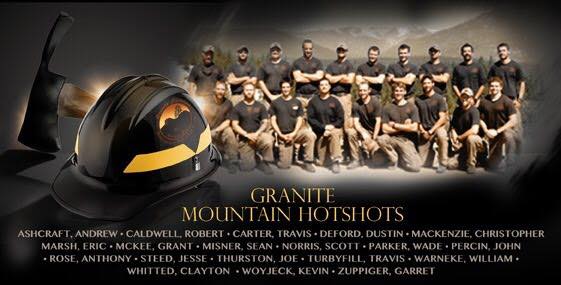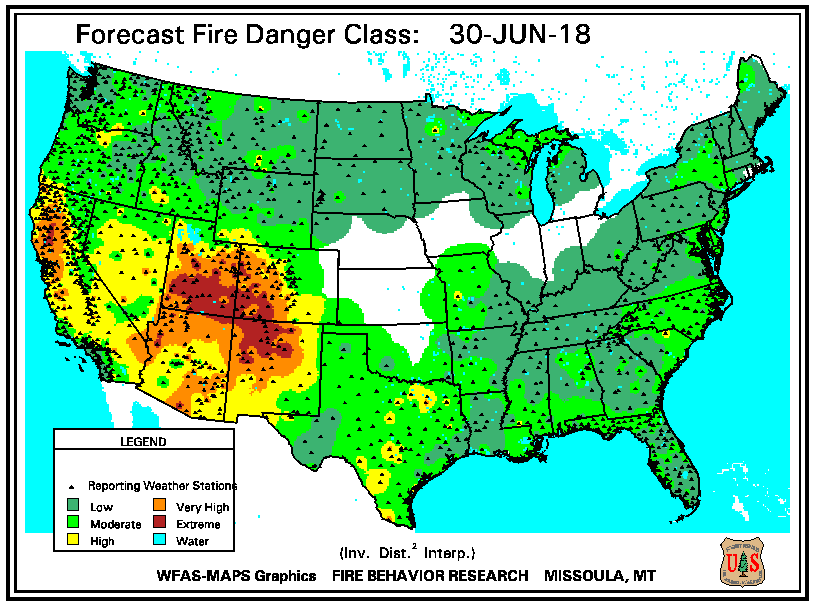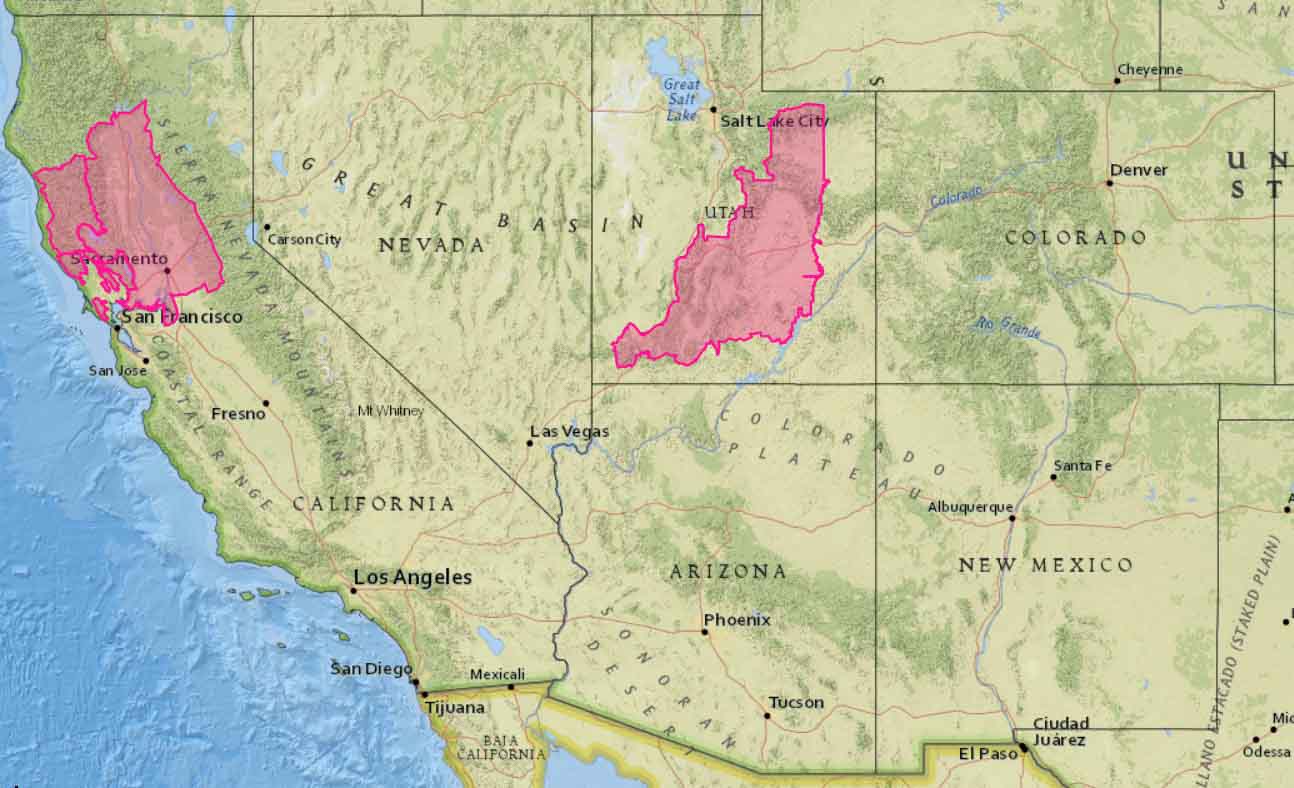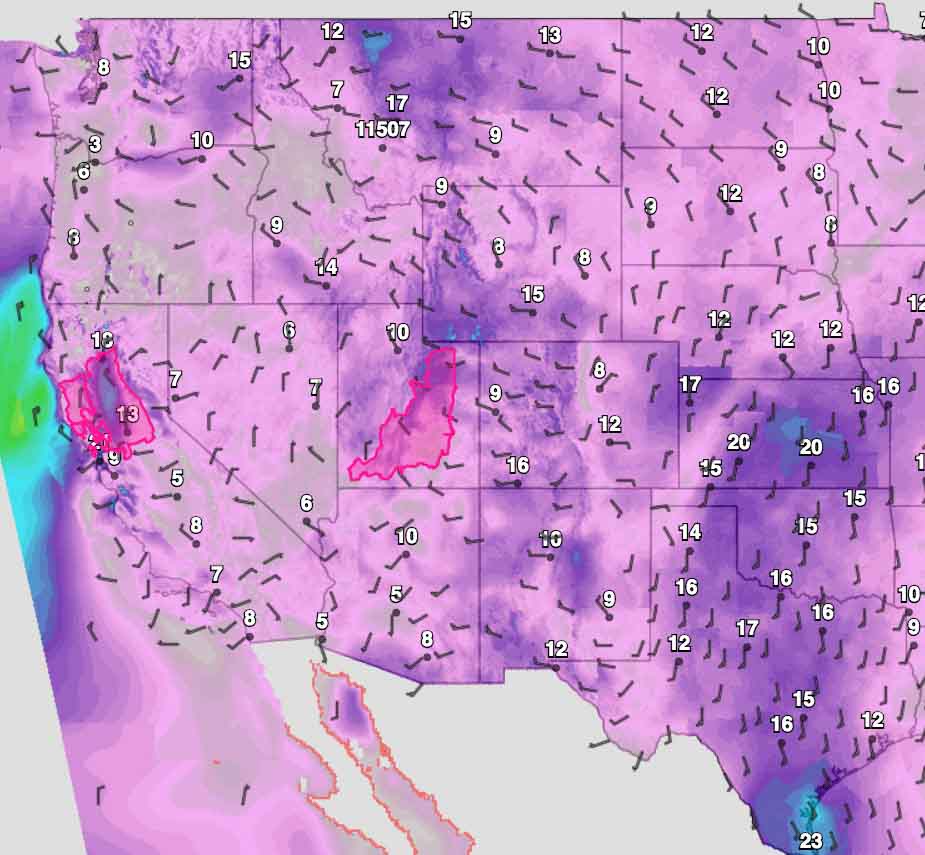(Originally published at 6:12 a.m. PDT July 2, 2018)
Burning in both Yolo and Napa Counties, the County Fire has doubled in size in the last 24 hours. The blaze is running across Rocky Ridge east of Lake Berryessa northeast of the San Francisco Bay area.
(Click Here to see all of the articles on Wildfire Today about the County Fire, including the most recent.)
Our VERY UNOFFICIAL estimate based on satellite data indicates that at 3 a.m. Monday it had burned approximately 42,000 acres — roughly 1,100 acres an hour since it was reported at 2:12 p.m. June 30. CAL FIRE’s official estimate released at 7:49 p.m. Sunday put it at 32,500 acres. During the 3 a.m. overflight there were large areas of very active fire, as represented by the red dots in the map below.
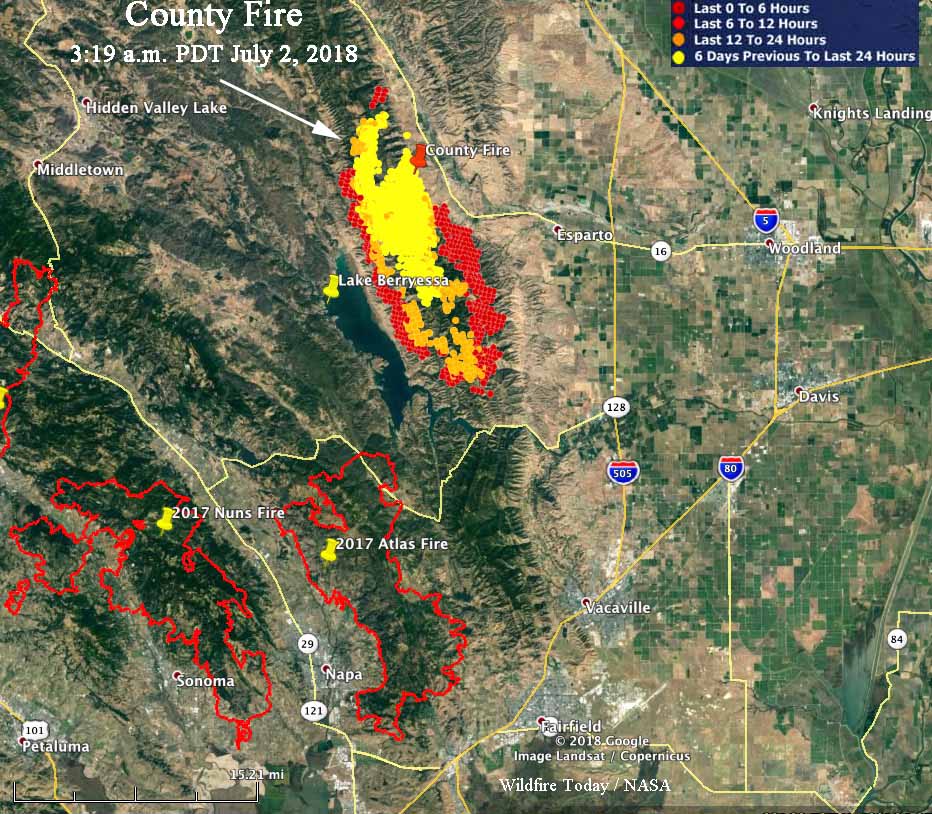
The County Fire is spreading northeast of the areas devastated by the North Bay Area Fires of October, 2017 that destroyed over 7,000 structures and killed 31 people. The footprint of the Atlas Fire could serve as a partial barrier, reducing the chance that this new fire could reach the Napa area again. But if it keeps moving south and crosses Highway 128 into Solano County there are many homes that could be threatened in the Vacaville area.
Many areas are under mandatory evacuation orders. For questions regarding Yolo County evacuations or advisories, dial 2-1-1. For questions regarding Solano County evacuations or advisories dial (707) 398-8261.
Evacuation center: Guinda Grange Hall in the Community of Guinda 16487 Forest Ave. Guinda, CA 95637.
The fire is being battled by 1,226 personnel, including 119 fire engines, 27 hand crews, 12 helicopters, 23 dozers, and 34 water tenders.
#CountyFire seen from Highway 16. .@KTVU pic.twitter.com/kOE9tR9EFN
— Leigh Martinez (@LeighMartinezTV) July 1, 2018
A high-resolution look at the #CountyFire smoke plume flowing SW atop the marine stratus layer. Taken by MODIS this afternoon #cawx pic.twitter.com/eBkt7M9LZ0
— NWS Sacramento (@NWSSacramento) July 1, 2018

